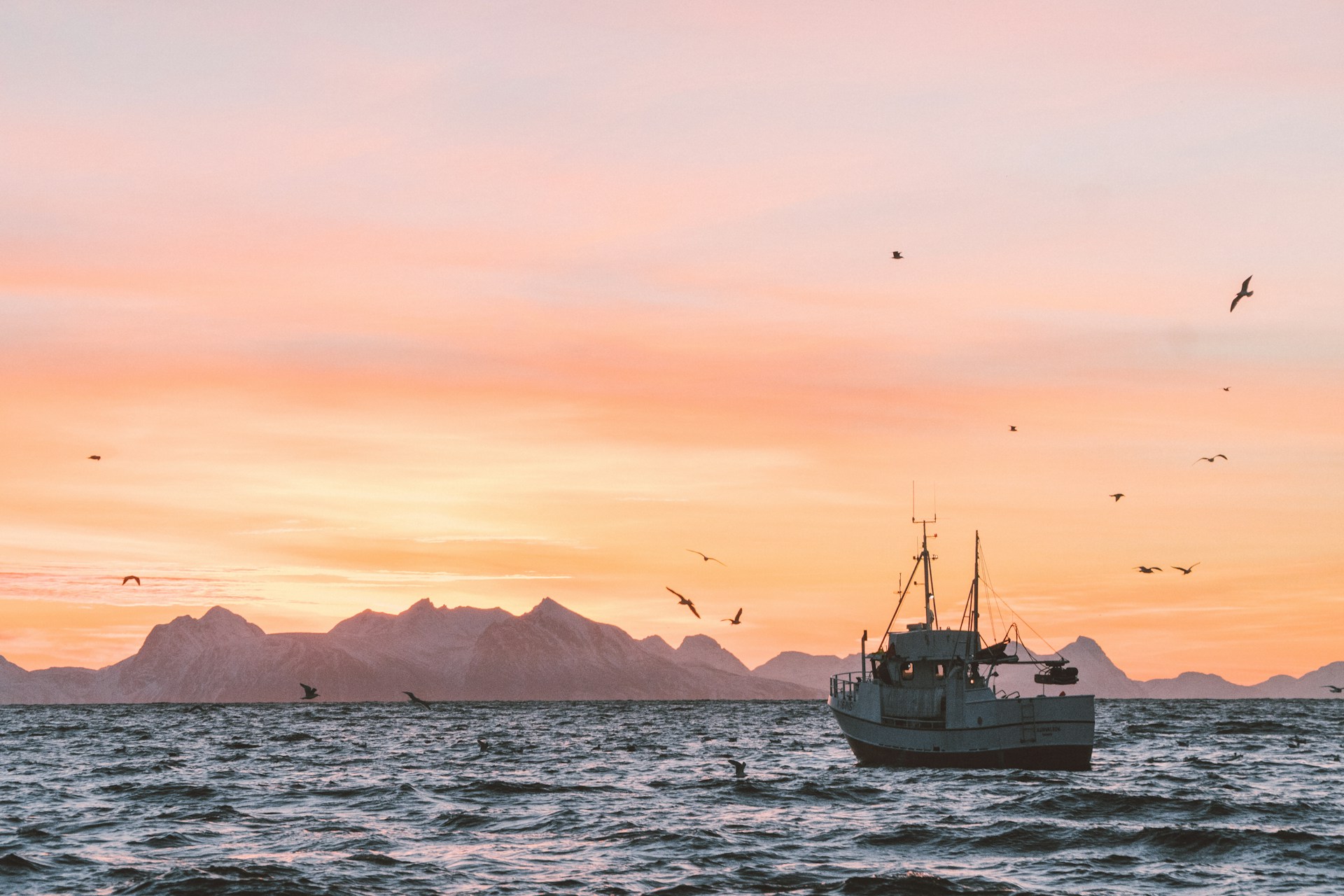 By Greta Fiedler, Juris Doctor Candidate at the University of Oklahoma College of Law, Founder and President of the Student Animal Legal Defense Fund Chapter at OU Law, and a Justice John Paul Stevens Public Interest Fellow. This article was published in conjunction with Materra.
By Greta Fiedler, Juris Doctor Candidate at the University of Oklahoma College of Law, Founder and President of the Student Animal Legal Defense Fund Chapter at OU Law, and a Justice John Paul Stevens Public Interest Fellow. This article was published in conjunction with Materra.
“They are building an empire on slavery, on stealing, on fish(ing) out, on massive environmental destruction for a plate of seafood.” – Susi Pudjuastuti, Indonesia’s Fisheries Minister[1]
INTRODUCTION:
There are currently 3.7 million fishing vessels patrolling the earth’s waters in efforts to extract and kill sea animals from the world’s oceans.[2] Around 100,000 people are enslaved on some of these fishing vessels[3] and almost 2.7 trillion ocean animals a year are taken from their homes by these vessels for human consumption.[4] This article is about the people on these boats and the animals caught by them. Moreover, this piece illustrates how the problem of human trafficking, and the exploitation of sea animals is interwoven.
Unlike other articles, this article is not problem-focused, but rather, it is solution-focused. The reason being is two-fold. First, I cannot better articulate the problem than how many esteemed researchers already have. Second, I believe the reason why problems like human trafficking and wildlife extraction persist is not because of the enormity of the problem, but instead, it is due to how we articulate solutions. The countless articles I read while researching for this piece often laid out the problem of human trafficking and overfishing in microscopic detail. For example, how fishermen recruitment operates, the lives of workers on fishing vessels, the process of how ocean animals are extracted from the ocean and sold in stores. But then in contrast, the articles offer vague solutions to alleviate these issues. The most common solutions I read were: (1) awareness campaigns, (2) convincing the government to enact new policies, and (3) more resources towards addressing the problem. For example, many websites recommended spreading information by word-of-mouth about the existence of human trafficking in addition to learning the warning signs to spot if an individual is a human trafficker.[5] The issue with these solutions is that they aren’t directly targeting the problem. Firstly, the typical reader of anti-human trafficking blogs is most likely not living in a community where human trafficking is taking place. And secondly, simply spreading awareness that human trafficking exists does not directly combat why the act is occurring. Awareness can more effectively be spread by coupling awareness with tangible solutions that most people, except the most exploited, can do.
This article is solution-focused about what you can do as an individual or an organization if you are interested in directly countering exploitative and extractive industries, such as the industrial fishing industry. First, I believe it is entirely possible to live in a world without forcing humans to work seventeen-hour workdays in a state of indentured servitude. Second, I also believe it is possible to live in a world where humanity is not suffocating trillions of sentient beings to death every year in fishing nets or on fishing boats. And lastly, I believe that everything we already need for a solution to either of these problems already exists. The solutions are focused on the power of the individual and do not rely on people in power to initiate the change. As history illustrates, the people in power are rarely the changemakers, anyway. I believe we should all be interested in acting against the world’s most harmful industries, since these practices only result in more net suffering on this planet.
You, reader, have the power to enact solutions, and more importantly, change relies on you.
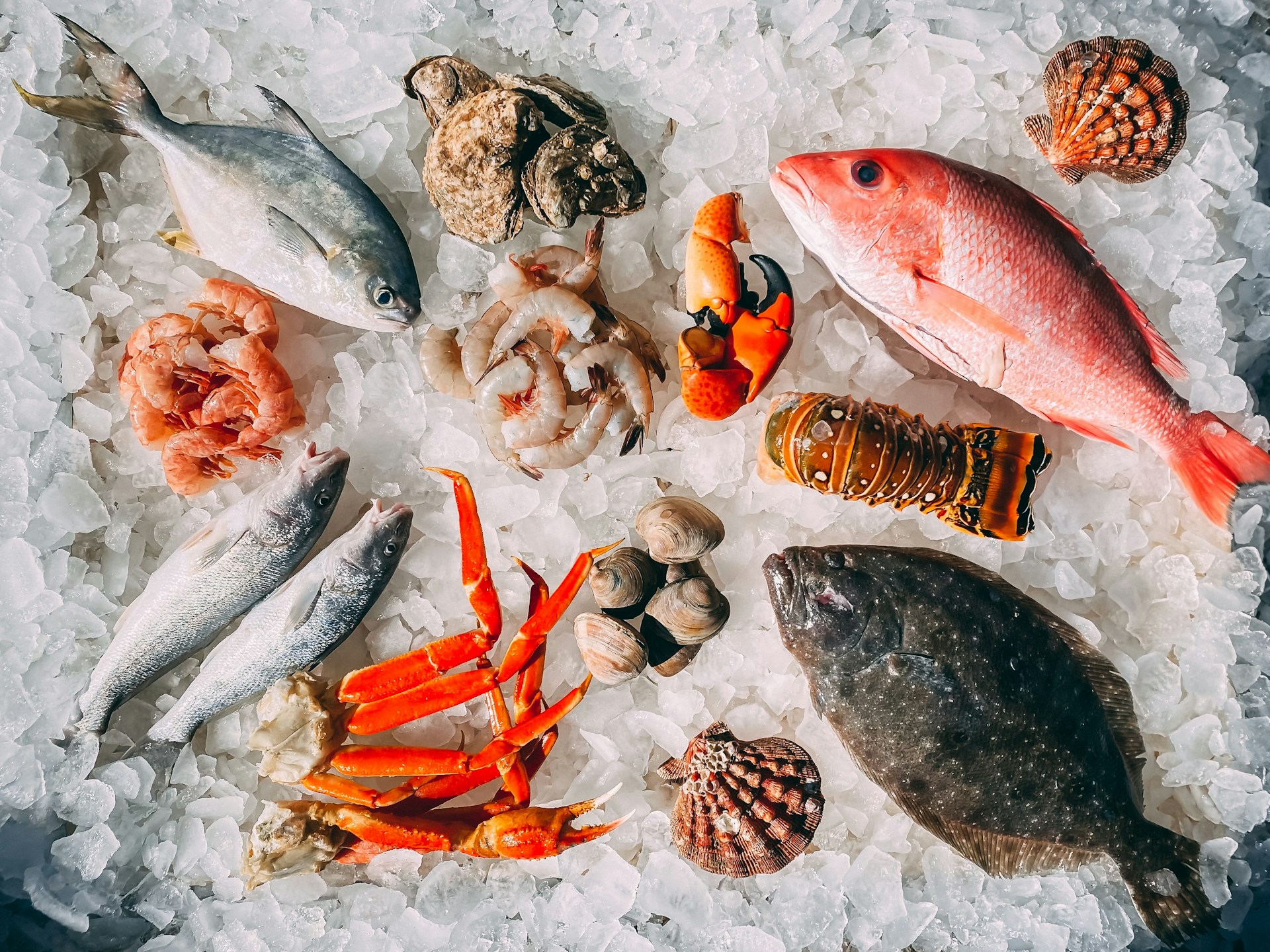
PART I: THE PROBLEM
The Intersection of Overfishing and Human Trafficking in the Industrial Fishing Industry:
Human trafficking is the use of fraud, force, or intimidation to coerce individuals to engage in labor against their will.[6] It is estimated that around 20 million people are subjected to human trafficking every year.[7] And of that, 20 million, 100,000 people are human trafficked onto fishing vessels around the world annually.[8] They often belong to an unskilled demographic group, like migrant workers, and are enticed by recruiters to leave their country for a promised well-compensated fishing job.[9] Because these workers are unskilled and desperate for money, they are vulnerable to deceit. Once on-board fishing vessels, these people suffer from a form of enslavement, where they are forced to work to exhaustion, subject to unhygienic conditions, and are financially indebted to their vessel captain. [10] A common payment scheme charges recruitment fees and other debt burdens that trap the person in a state of perpetual servitude. These individuals are confined to fishing vessels, sometimes for years, working eighteen-hour workdays.[11] An investigation conducted by AP in 2015 reveals that fleet managers in Thailand maintain a working population of forced labor by subjecting them to physical punishment if they attempt to rebel or escape: beatings and physical confinement using chains a common practice.[12] By enduring gruelling physical labor coupled with impoverished treatment, fishermen often rebel or develop a mental state of severe helplessness.[13] Rebelling often leads to torture or being thrown overboard.[14] Oftentimes, the fishermen are left with no outlet other than to throw themselves into the water.[15] Their working conditions led them to suicide.
Not only is the industrial fishing industry ripe with human abuse, but it is also the largest animal abuser on the planet. An incognizable 2.7 trillion ocean animals are extracted from the ocean every year.[16] This is equivalent to 5 million fish caught every minute. With exploitation numbers so high, it should come as no surprise that almost 90 percent of global marine fish stocks are now fully exploited or overfished.[17] While some tout solutions like sustainably caught fish, the unfortunate reality is that the demand for fish is twice the estimated supply of sustainably caught wild fish.[18] Additionally, not all fish caught from the ocean are regulated. Over 20 percent of fish taken out of the oceans are caught from the illegal, unreported, and unregulated (“IUU”) fishing industry.[19] Due to a lack of oversight, the IUU industry prevents overfished populations from rebuilding and hurts marine ecosystems by skewing statistics about the quantity of sea animals that are extracted from the ocean. It is estimated that the IUU industry extracts 1,800 pounds of wild-caught fish from the global seas every second.[20] Around 20-32% of the seafood that the United States imports is illegally caught, so even affluent countries like the United States perpetuate the IUU industry. [21] With that said, regardless of whether the extraction is recorded or not, the problem of sea animal extraction is so dire that we could see virtually empty oceans by 2048.[22]
The depletion of global fish stocks perpetuates slavery at sea. The explanation is intuitive as to why: overfishing depletes near-shore fish stocks, which means fleets must travel longer distances for their catch, which results in higher fixed costs, such as vessel maintenance, fuel, and gear.[23] To maintain profits, the one variable a fishery can control is labor costs. Coupled with the fact that the fishing industry is highly unregulated and difficult to monitor, there is little incentive for fisheries to pay fair wages and provide ethical working conditions.[24] The law that governs working conditions at sea is the law of the country that governs the fleet. However, it is incredibly difficult to enforce and monitor a workforce that travels around the seas. When it comes to regulating fishing internationally, the International Council for Exploration of the Seas (ICES) advises fishing limits to countries, but these quotas are not binding.[25] With fishing stocks so depleted, it may be impossible for some fleets to make a profit on anything other than exploited labor. In fact, a recent study by the University of British Columbia found that a fishing vessel is only profitable with either the help of government subsidies or using forced labor.[26] Once a fleet begins using forced labor, they are unlikely to go back, especially because that would make their fleet unprofitable. The more sea animals are extracted from the ocean, the more it will become increasingly difficult for the fishing industry to locate abundant stock, and thus more humans will be tricked onto fishing vessels in a state of indentured servitude.
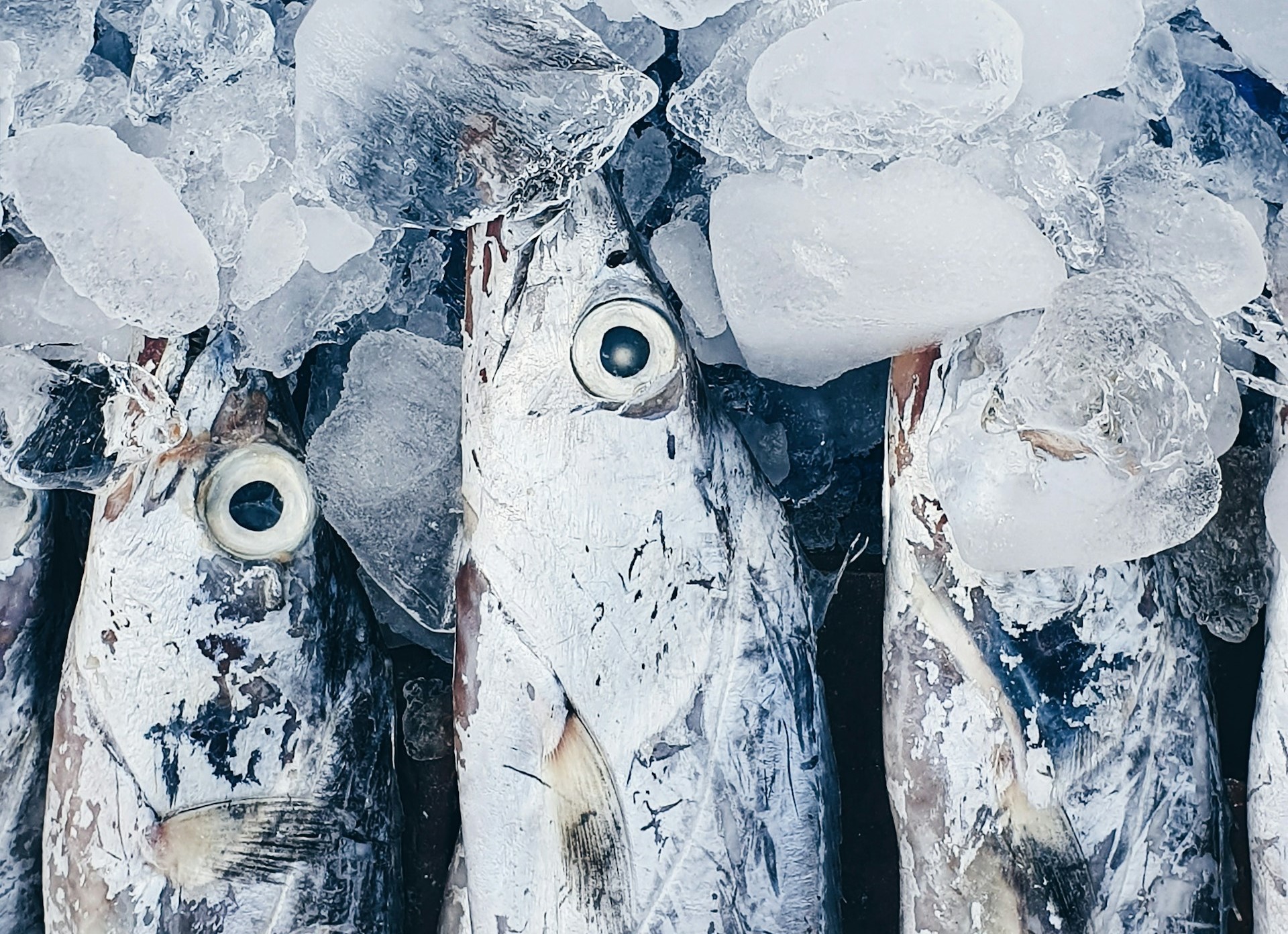
PART II: THE PROBLEMS WITH THE CURRENT SOLUTIONS
Why Awareness Campaigns are Not Enough:
The purpose of awareness campaigns is to spread information about the existence of a problem. An example of an awareness campaign is the United Nation’s “Blue Heart” campaign. By affixing a blue heart to one’s chest, the UN claims that one “is raising awareness of human trafficking,” and the heart represents “solidarity with human trafficking victims.”[27] People initiating awareness campaigners assume that once people know about an issue, they will correct their behavior to help solve the problem.
Research illustrates that this isn’t always the case. There is a consensus among most social scientists and researchers who study behavior, that “[t]here are a lot of reasons why people do what they do, [and] lack of awareness of their actions’ potential repercussions ranks pretty far down the list.”[28] People don’t make decisions, especially not the quick, tired, or reflexive ones, using intellectual factors. Instead, decisions are mostly born out of cognitive shortcuts and social cues.[29] This means that simply learning about the effects of one’s actions is often not enough to alter one’s behavior. This is why obesity campaigns aimed at educating people about the dangers of an unhealthy diet can be ineffective at influencing behavior.[30] Most people who eat junk food are aware that the food isn’t nutritious or beneficial for them. Instead, there are a multitude of other factors, environmental and mental, that trigger a person’s behavior to consuming such ultra-processed and addicting foods, even though many people who do so are aware that eating such foods are harmful.[31]
With that said, awareness campaigns aimed at reaching people’s emotions and inherent values have proven more effective. Studies show that the U.K.’s National Health Service’s anti-smoking campaign that focused on the fears of a smoking father and his child were more much effective to adult smokers than learning about statistics about the dangers of smoking.[32] The effectiveness of the campaign can be explained because the campaign influenced the elements that actually affect behavior change, like recognizing that one’s core identity or values are not aligned with one’s actions.
There are even instances of awareness campaigns having a backfire effect, causing more people to perform the undesirable behavior. The National Youth Anti-Drug Media Campaign, which aimed at educating the youth about the dangers of drug use in the United States, inevitably caused smoking weed to become more favorable among youth because the campaign normalized the behavior.[33] The anti-pilching campaign at Arizona’s Petrified Forest National Park caused more park visitors to steal petrified wood.[34] And gender-based violence campaigns have been shown to normalize gender-based violence in communities where campaigners have advertised it is prevalent.[35] When it comes to human trafficking, awareness campaigns about the problem could result in the normalization of human trafficking. This is because people will become aware of how wide-spread human exploitation is and then subsequently feel completely helpless about doing anything about it. They will become aware that if everyone else is complicit about it, then they have a free pass too.
The Issues with Policy Campaigns:
The effectiveness of policy campaigns is dependent on a plethora of factors that rely broadly on tactics, messaging, and evidence.[36] Therefore, it is difficult to critique policy campaigns as a whole. With that said, there are issues with relying on policy change as the sole solution to a problem. First, policy campaigns shift the responsibility of change from the individual onto someone else. They falsely cause people to believe that their own personal choices do not have any effect on the greater world, and the solution rests in stricter regulations. Of course, stricter regulations would be beneficial, but it also misses the point as to what is the driving force behind those stricter regulations. Policy decisions are not made in a vacuum, rather they are a result of external pressures, such as cultural shifts. For example, the 19th Amendment of the United States Constitution, which prohibited the United States and its states from denying the right to vote to citizens of the United States based on sex, was a response to decades of relentless activism and broad societal changes towards recognizing a woman’s agency. A shift in social norms is exactly what pressures policymakers to craft stricter regulations. It also influences how well policies are implemented and enforced, making them more likely to be followed and accepted.
Secondly, if a policy change is enacted, it does not mean that anything tangible gets accomplished. An example is the United States’ statute that renders it illegal to import goods and merchandise created with forced labor. The Smoot-Hawley Tariff Act was passed more than 85 years ago, and it grants the Customs and Border Patrol with enforcement authority, and the Department of Justice with the ability to prosecute a person or company that is complicit in human trafficking.[37] Despite this fact, the Department of Justice has conducted 0 prosecutions related to human trafficking. This is the despite ample evidence of human trafficking occurring in Thailand’s fishing industry,[38] and companies such as Wholefoods importing and selling these sea animals caught with forced labor.[39] With that said, the DOJ awards over $90 million to organizations focusing on services, policy, and awareness campaigns for human trafficking, instead of pursuing prosecution against WholeFoods themselves.[40] Additionally, policy grants the Customs and Border Patrol agency authority for how they can enforce the Tariff Act has resulted in only four instances of enforcement in the past fifteen years, all related to items produced in Chinese prisons.
Campaigns against human trafficking is a cause that most people feel comfortable rallying behind. Part of the reason could be because it isn’t controversial to believe that exploiting human beings is wrong. This is why “[p]olicies to fight modern slavery are championed by right- and left-wing governments.” And “[m]ulti-national corporations host panels about fighting modern slavery at the World Economic Forum, United Nations summits, and rock music festivals.” It also explains the ideological diversity of activists behind campaigns to eradicate slavery from “anti-slavery activists, students, churches, and conservative antifeminist organizations.”[41] However, these campaigns often play it safe. They spend billions of dollars making us aware of the problem and promising to end it in our lifetime. Yet, we are left with little actionable and achievable calls to action.[42] This could be because the solutions are controversial, uncomfortable, and critical of the cultural shields us humans use to justify our actions.
When it comes to combatting human trafficking and overfishing, awareness of the problem is not going to be enough. These industries exist because people support them and are complicit to their actions. Leading campaigns with a solution, such as an actionable behavior that people can undergo to combat these industries, not only makes people aware that a problem exists in the first place, but it also provides them something they can do about it. I propose a new approach. First, we must acknowledge three motifs: change is uncomfortable, change is challenging, and change requires us to act. Second, we must recognize that we owe a responsibility to others to change. We are responsible even though our name doesn’t begin with the title Senator, Prime Minister, or Secretary. We cannot rely on others to do the work for us because that is the exact mentality that leads to nothing getting done. It is through these principles where we can improve the lives of others and minimize suffering on this planet.
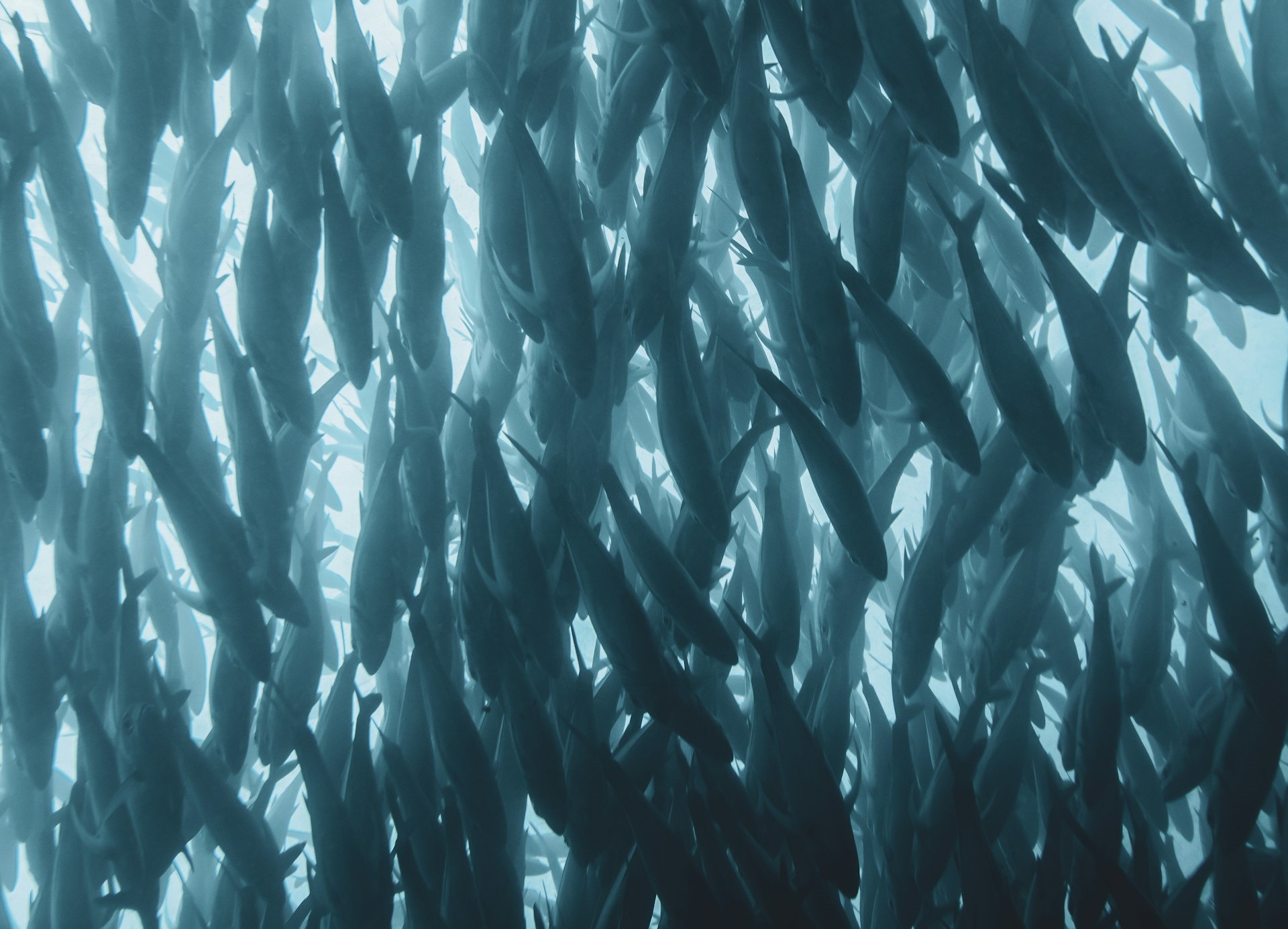
PART III: THE SOLUTIONS
Change Requires the Individual
Change is a collection of individual actions. Therefore, the first best thing that someone can do to affect change around them is to alter their own behavior. If someone is to do nothing else, an individual can take part in combatting human trafficking and the suffocation and abuse of animals by not supporting an industry who commits these acts of atrocities. If enough people join a boycott, it can significantly impact a company’s profits. One example of a boycott are Americans who do not wish to support the American dairy industry for ethical, health, and environmental reasons. The amount of milk Americans consume has declined 40% since 1975.[43] Sales of cows’ milk are on the decline in the United States, where companies like Dean Foods, the United States’ largest dairy producer, are declaring bankruptcy.[44] [45] While at the same time, sales of plant-based milks are skyrocketing. Oat milk sales jumped 636% in just one year.[46] By similarly boycotting the fishing industry and demanding alternatives, people collectively set new standards for industries.
As part of boycotting industries, people with access can support plant-based alternatives. For example, Oshi, an Israeli-based company, aims to protect the world’s oceans by producing plant-based whole-cut sea food fillets made from legume proteins and algae extracts.[47] Therefore, one can enjoy the fish taste without the destructive harms. With that said, one does not even need access to designer plant-based salmon to enjoy the taste of seafood and not support the fishing industry. There are many delicious recipes that create battered “fish” from tofu and seaweed, or a “tuna” salad using chickpeas. By using plants, one can help normalize consuming plants instead of animals amongst one’s friend groups and communities. This is a vital step in creating the cultural shift necessary to decrease the demand for fish caught, which helps protects animals and the people working on fishing vessels.
Change Requires A Civil Society
A next step one can take is to support groups that are focused on direct action to remove fish from menus. One notable group is Plant-Based Universities, whose aim is to advocate and assist universities around the world to switch to 100% Plant-Based catering. These student-led campaign groups have resulted in tangible outcomes, such as nine universities who have now voted for a fully plant-based transition, such as Universities of Cambridge and Stirling.[48] Currently, there are active campaigns at over 70 universities around the world.[49] Another group focused on direct action is Sea Shepard. Sea Shepard patrols the oceans defending all marine wildlife. They do this by removing illegal fishing gear, discarded fishing nets, surveilling the oceans to help authorities enforce fishing laws, and working with governments to create more marine protected areas.[50] The key to look for when supporting an organization is if they are taking part in direct action to combat the problem. The goal is to minimize the number of fish extracted from the ocean. An organization whose focus is to make people simply aware of the problem of human trafficking and overfishing is not an optimal choice.
Policy changes are also useful when coupled with cultural shifts. The key is to advocate for individual change along with a policy that is extremely specific. For example, ending government subsidies to the fishing industry is incredibly important to make boycotts against the fishing industries more effective. Subsidies mean that the fishing industry gets paid to fish, even if there are no fish to catch. Annual subsidies to global marine fisheries amount to about $35 billion USD.[51] If an organization targeted a specific agency, such as the USDA in the United States, and a specific dollar amount gifted to a company with a track record of human trafficking, a campaign to end those subsidies could put a lot of pressure on an agency to at least reduce subsidies to that specific company.
In the United States, an additional policy that could be effective is a state-wide prohibition on the sale of fish extracted by forced and unpaid labor. This would be a similar strategy to California’s Proposition 12, which banned the production and sale of pork products in the state of California produced using the extreme confinement of pigs.[52] By virtue of California shifting its standards, any farm that sells to California must alter their facilities to remain compliant to the new law.[53] Thus, Californians taking local action affected more than just pig farms in California, and it caused a national conversation about the ways pigs are treated. Therefore, one state legislating such a demand, such as a prohibition on imports of fish caught using enslaved labor, not only forces some fleets to change their practices, but it also sends sirens to the industry that the people are demanding more ethical standards.
Lastly, if one is to focus on spreading awareness, there is an important myth that needs to be addressed. This is the myth that fish are not sentient and cannot feel pain. Studies reveal that fish do feel pain, and that they are conscious and curious individuals.[54] After reviewing the literature, Dr. Donald Broom, Professor of Animal Welfare at Cambridge University states that “[a]natomically, physiologically and biologically, the pain system in a fish is virtually the same as in birds and mammals.”[55] Additionally, the chief scientist of the U.S. National Oceanic and Atmospheric Administration has stated that “fish are sensitive, they have personalities, they hurt when they’re wounded.”[56] Free on YouTube is internationally acclaimed animal rights advocate, Ryuji Chua’s, documentary where he explores the question “How Conscious Can A Fish Be?” The film robustly covers the evidence that suggests that fish feel, think, and suffer, much like dogs, cats, and other animals.[57] I highly recommend that everyone watches this mesmerizing documentary. It not only shows us how wonderful our relationship with fish could be, but it also helps to color the severity of the problem of industrial fishing and human trafficking. As it currently stands, the industrial fishing industry is perpetuating an endless cycle of abuse and suffering to human beings and the aquatic animal world.
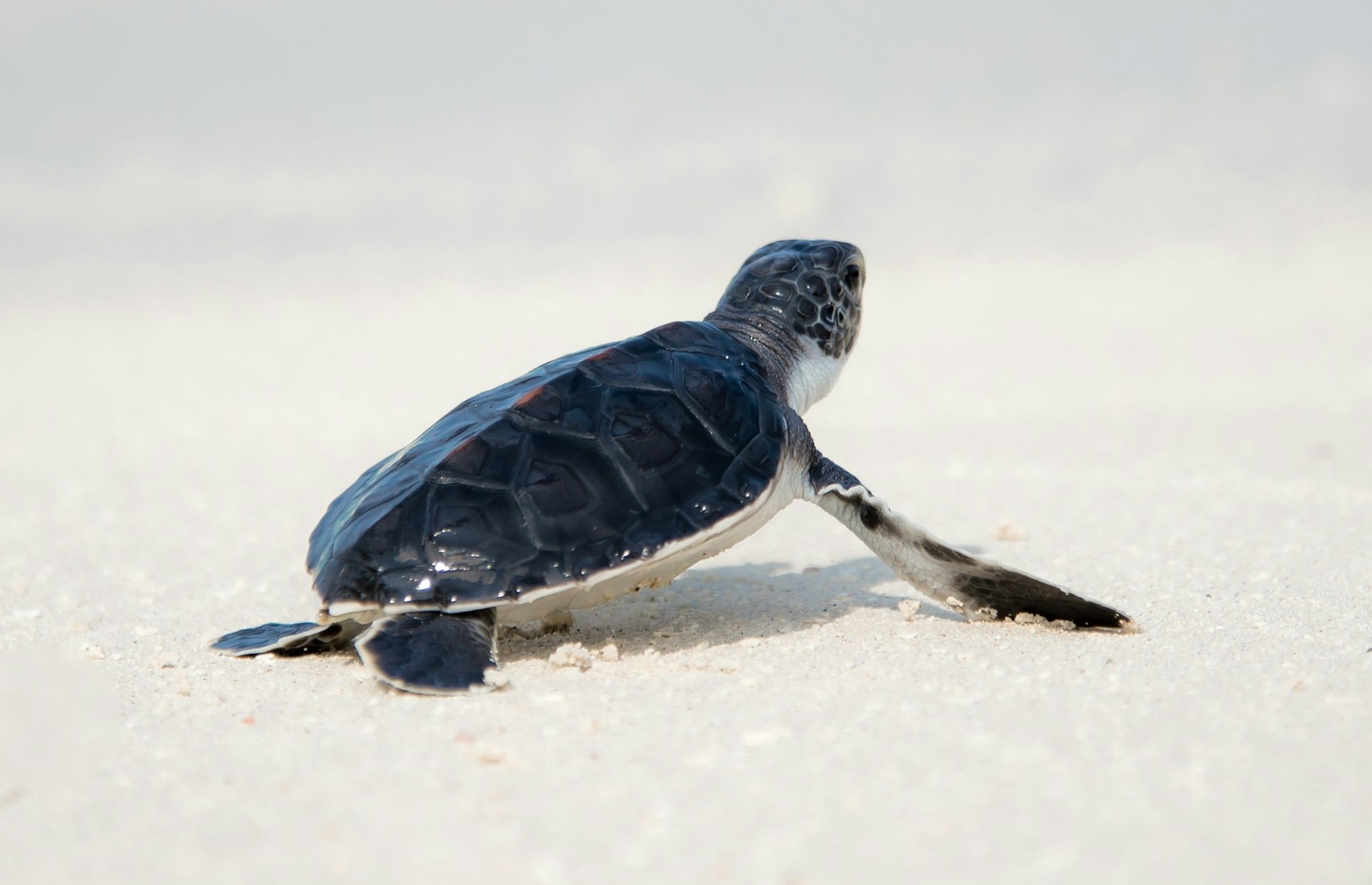
CONCLUSION:
As a university student I visited a sea turtle sanctuary at a coastal town in Oman while I was studying abroad. I woke up at dawn, and with a guide, he led a small group of us to the beach so we could watch a nest of sea turtles hatch. As still and silent as we could possibly contain ourselves, we watched dozens of little baby sea turtles, almost no bigger than the size of my thumb, leave their nest and crawl towards the sea for their first experience in the water. When they reached the point where the sand met the water, a wave would wash over them, and when the water retreated back, they would be gone.
I could hear spectators in a hushed whisper cheer every time a turtle reached the water. I too longed to feel so happy for them. Yet, I had nothing but a sinking feeling in my chest. I couldn’t help but mourn at the reality these turtles would face out at sea. They will live in oceans that carry over 3.7 million fishing vessels in its waters at all times. Many of them will eventually suffocate in fishing nets that can reach up to seven miles in length.[58] Or they will drown from being caught by a bottom trawler and held underwater for the duration of the trawl.[59] When each baby sea turtle broke out of their eggshells, they were leaving the safest place on the planet for them. Their lives were destined to be brief and traumatic. For all the creatures whose lives are not recognized is why I ultimately write this article.
Non-hyperlinked references:
[18] Netherlands Environmental Assessment Agency. 2010. Rethinking Global Biodiversity Strategies: Exploring Structural Changes in Production and Consumption to Reduce Biodiversity Loss. The Hague, Netherlands.
[24] Andrew Crane, “Modern Slavery As a Management Practice: Exploring the Conditions and Capabilities for Human Exploitation,” Academy of Management Review 38 (1) (2013): 49–69; Elizabeth M. Wheaton, Edward J. Schauer, and Thomas V. Galli, “Economics of Human Trafficking,” International Migration 48 (4) (2010): 114–141.
[41] LeBaron, Genevieve, Pliley, Jessica R., and Blight, David W. Fighting Modern Slavery and Human Trafficking : History and Contemporary Policy / Edited by Genevieve LeBaron, University of Sheffield, Jessica R. Pliley, Texas State University, David W. Blight, Yale University. 2021. Print. Slaveries since Emancipation.

Greta Fiedler
Greta is a Juris Doctor Candidate at the University of Oklahoma College of Law, USA. She is the Founder and President of the Student Animal Legal Defense Fund Chapter at OU Law, and is a Justice John Paul Stevens Public Interest Fellow.